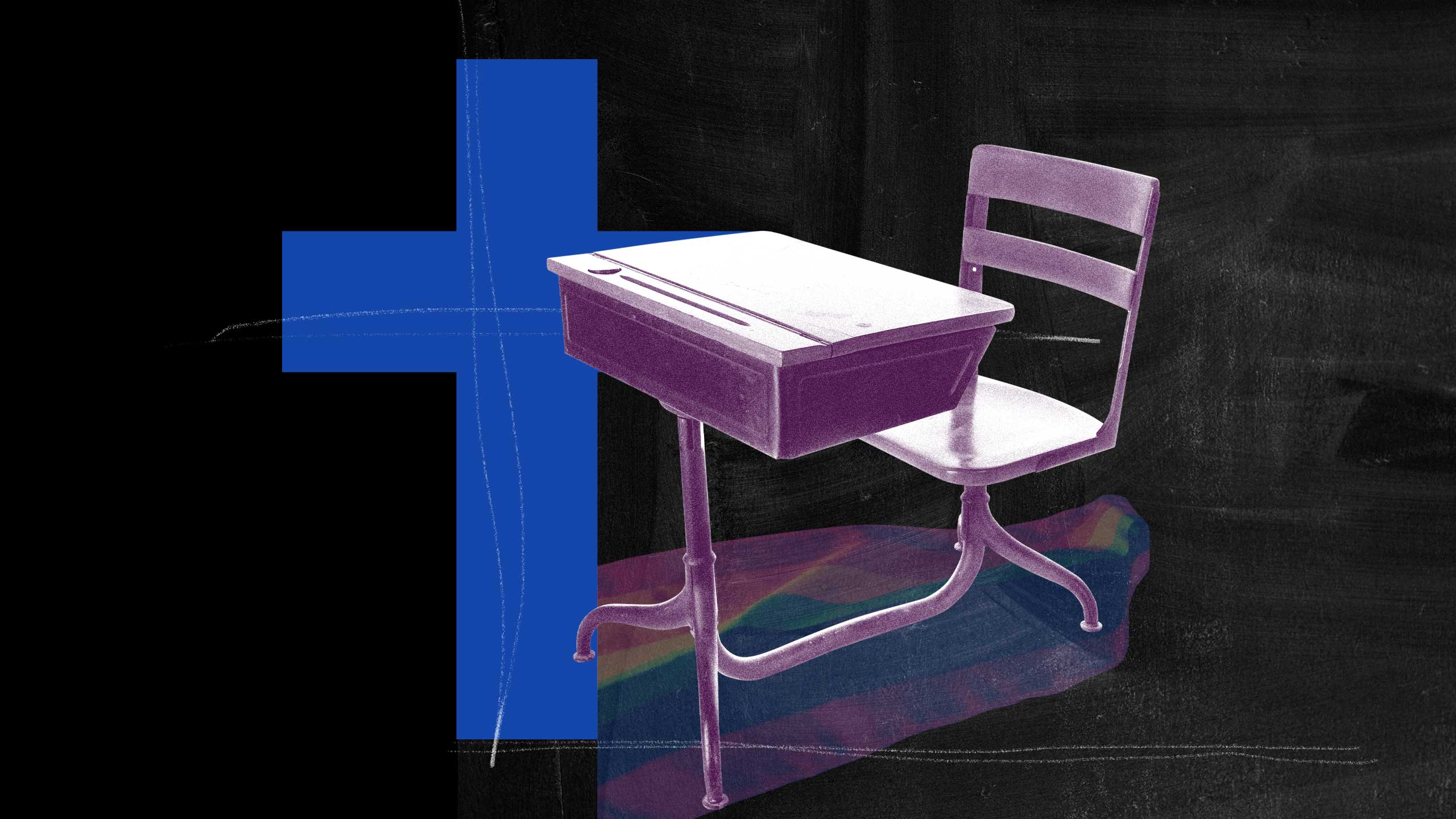On Mar. 4, in a public committee meeting for the Toronto Catholic District School Board (TCDSB), Jody Maillet made a deputation against a proposal to recognize June as Pride Month in the board’s 196 schools. “Gay pride is not compatible with the Catholic faith,” the father of two TCDSB students told the board of trustees. “Homosexual acts are intrinsically disordered.” Maillet then concluded his deputation by quoting from the book of Matthew: “If any one of you put a stumbling block before one of these little ones who believe in me, it would be better for you if a great millstone were fastened around your neck and you were drowned in the depth of the sea.”
Maillet’s deputation was not accepted for review by the board, and trustees chose not to remark or ask questions about Maillet’s comments. But the video of his deputation had already begun to make its rounds online, prompting an open letter to Maillet’s employer and condemnation from elected officials like Toronto city councillor Kristyn Wong-Tam.
This is the ongoing strife for LGBTQ2S+ students in the world’s largest publicly funded Catholic school board: An ongoing debate over the validity of their existence in the very places they should feel most safe to be themselves.
The TCDSB has the opportunity to make a positive change for all of its students by openly celebrating Pride. But trustees have squandered every chance so far to make it right. Last year, educator Paolo De Buono petitioned for the school board to recognize June as Pride Month in all TCDSB schools; that motion failed. De Buono says it’s unlikely the board will vote by June to recognize Pride Month in 2021—another year gone by without action.
“Even in schools—havens where young people should feel safe and empowered—risks abound for LGBTQ2S+ students.”
Such remains the reality for LGBTQ2S+ students in Catholic schools across the country. Victories for the recognition of their existence are few and far between, and supports are difficult to access. Ontario students, for instance, won the legal right to start gay-straight alliances (GSAs) in schools back in 2012. But that hasn’t stopped anti-gay and anti-trans actors from preventing their support in the years since. Just this January, the board removed a link to LGBT YouthLine, a resource for LGBTQ2S+ youth, from TCDSB websites, bowing to the pressure of a former educator who claimed its content was akin to pornography. (The board later reinstated the link due to widespread online outrage.)
We know that LGBTQ2S+ youth are at greater risk for mental health issues, violence and poverty. One-third of lesbian, gay and bisexual youth in Canada has attempted suicide, compared to just 7 percent of their straight counterparts. Queer and trans youth are disproportionately represented in homeless populations. And even in schools—havens where young people should feel safe and empowered—risks abound. A 2011 Canadian research study by Egale Canada found more than half of all queer students surveyed and 77 percent of trans students say they’ve been verbally harassed at school.
Despite this, LGBTQ2S+ Catholic school students across the country continue to battle for safety and inclusion in the spaces where they spend most of their days.
I know this fight firsthand: I attended publicly funded Toronto Catholic schools for 14 years. After I came out as a lesbian in Grade 10, I faced homophobic bullying for years. On my birthday, students vandalized my locker with the word “dyke” scribbled in Black sharpie; they faced no repercussions despite being caught on camera. Word of my queerness had spread to other nearby Catholic schools, and so bus rides home became unsafe, too.
“A decade later, I see queer and trans students and allies still fighting for the same recognition that I did.”
Along with a classmate, I founded a gay-straight alliance during my final year of high school, in 2011. But getting there was a painful process, too. As conversations about other LGBTQ2S+ Catholic school students organizing began swirling, administration at my school was uneasy about allowing us to start a GSA. The best they could do was a weekly support group with a social worker—with only gay students in attendance. We continued to push; eventually, the administration relented and allowed the group to function as a more traditional GSA.
A decade later, I see queer and trans students and allies still fighting for the same recognition that I did. Like the establishment and support of a GSA, to celebrate Pride Month is to show solidarity and joy for the students who have so often faced hate. It’s to celebrate the resilience of marginalized youth. To actively avoid or prevent that kind of recognition underscores a strong message: LGBTQ2S+ students are not worthy of celebration or joy.
There are positive examples: As of 2020, 11 of 29 English Catholic school boards in Ontario recognized June as Pride Month. That these boards were internally motivated to recognize Pride is worth commending. The TCDSB also opened up applications to queer and trans community members and allies to join its 2SLGBTQ+ Advisory Committee—a step in the right direction, but one that puts the onus for change onto marginalized folks.
These conversations are just the start. There is still plenty of work to be done, beginning with the base recognition and acceptance of all students attending Catholic schools across the province and the country.
At the same Mar. 4 meeting where Maillet made his deputation, TCDSB student Stephanie De Castro also spoke—but in support of recognizing Pride in schools. “To allow students to see representation in their own school walls by allowing the Pride flag to be raised [sends] a clear message that we, as a Catholic community, are accepting of others,” she told the board. De Castro’s deputation was encouraging: Students are still primed to fight this battle for equality and fairness in their schools. That they have to fight at all is a shame Catholic schools must live with.
Update: May 7, 2021 12:10 pmOn May 7, 2021, TCDSB trustees voted to recognize Pride and fly the rainbow flag at their schools across the city. Read more about the decision here.


 Why you can trust Xtra
Why you can trust Xtra


